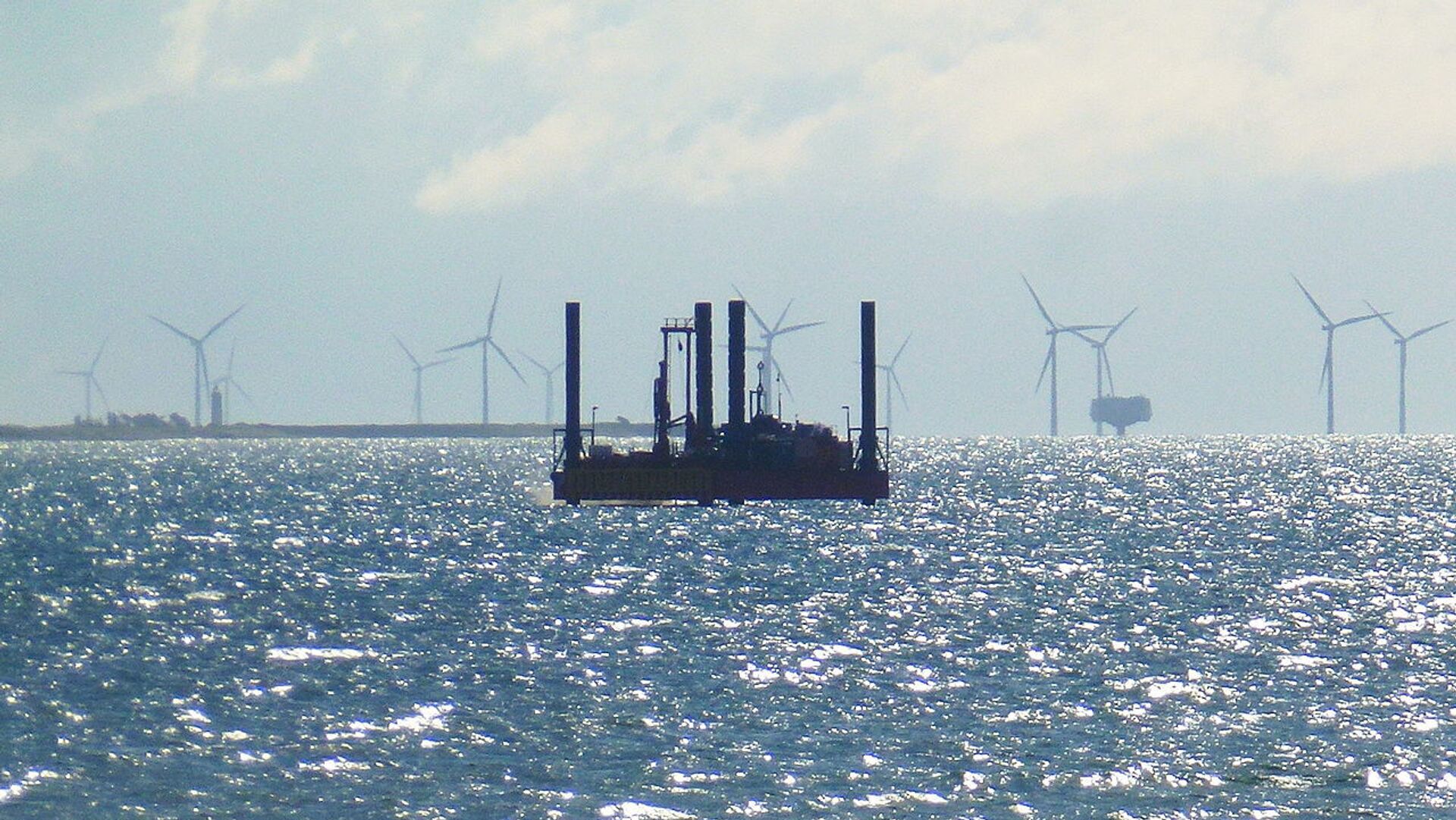https://sputnikglobe.com/20211201/construction-of-worlds-longest-underwater-tunnel-underway-between-germany-and-denmark-1091161741.html
Construction of World's Longest Underwater Tunnel Underway Between Germany and Denmark
Construction of World's Longest Underwater Tunnel Underway Between Germany and Denmark
Sputnik International
The 18 km tunnel under the Baltic Sea is expected to slash train journey times between the German city of Hamburg and the Danish capital Copenhagen to below... 01.12.2021, Sputnik International
2021-12-01T06:22+0000
2021-12-01T06:22+0000
2021-12-01T06:22+0000
denmark
tunnel
newsfeed
germany
scandinavia
belt
https://cdn1.img.sputnikglobe.com/img/107910/50/1079105097_0:0:1280:721_1920x0_80_0_0_b906fdc7bd461a9e08d9fbd09e11cbfb.jpg
Construction work on the Fehmarn Belt Fixed Link, an underwater tunnel connecting Germany and Denmark, has begun at Puttgarden on the German side of the project.The 18 km tunnel under the Baltic Sea between the islands of Lolland in Denmark and Fehmarn in Germany is expected to slash train journey times between the German city of Hamburg and the Danish capital Copenhagen to below three hours from the current journey time of four hours and 30 minutes.Once open, the tunnel will have the capacity to accommodate 70 freight trains and 38 passenger trains per day. Train journeys are expected to take seven minutes while car journeys will take 10 minutes.Danish Transport Minister Benny Engelbrecht called the DKK 55.1 billion ($8.6 billion, €7 billion) Fehmarn Belt an “incredibly important construction project for both Denmark and Germany, indeed for the whole of Europe”.Enak Ferlemann, German parliamentary state secretary in the Federal Ministry of Transport and Digital Infrastructure, called the tunnel one of the largest and most significant transport infrastructure projects in Europe this decade. “It helps Europe grow closer together and promotes the development and exchange of business, science and tourism,” he added.German Transport Minister Bernd Buchholz ventured that apart from moving Copenhagen closer to Hamburg, the Fehmarnbelt tunnel will give an enormous boost to infrastructure and employment growth.The tunnel will be constructed by digging a trench along the seabed, after which large prefabricated concrete sections will be floated out and lowered into place. At both ends, cut and cover tunnels will be built to connect the tunnel to portals.The entire project is being funded through state-backed sovereign loans that will be repaid through tunnel access charges over a period of 28 years.The construction is slated for completion by 2029.
denmark
germany
scandinavia
Sputnik International
feedback@sputniknews.com
+74956456601
MIA „Rossiya Segodnya“
2021
News
en_EN
Sputnik International
feedback@sputniknews.com
+74956456601
MIA „Rossiya Segodnya“
Sputnik International
feedback@sputniknews.com
+74956456601
MIA „Rossiya Segodnya“
denmark, tunnel, newsfeed, germany, scandinavia, belt
denmark, tunnel, newsfeed, germany, scandinavia, belt
Construction of World's Longest Underwater Tunnel Underway Between Germany and Denmark
The 18 km tunnel under the Baltic Sea is expected to slash train journey times between the German city of Hamburg and the Danish capital Copenhagen to below three hours, as well as provide an important freight link and give a boost to local infrastructure and employment.
Construction work on the Fehmarn Belt Fixed Link, an underwater tunnel connecting Germany and Denmark, has begun at Puttgarden on the German side of the project.
The 18 km tunnel under the Baltic Sea between the islands of Lolland in Denmark and Fehmarn in Germany is expected to slash train journey times between the German city of Hamburg and the Danish capital Copenhagen to below three hours from the current journey time of four hours and 30 minutes.
Once open, the tunnel will have the capacity to accommodate 70 freight trains and 38 passenger trains per day. Train journeys are expected to take seven minutes while car journeys will take 10 minutes.
Danish Transport Minister Benny Engelbrecht called the DKK 55.1 billion ($8.6 billion, €7 billion) Fehmarn Belt an “incredibly important construction project for both Denmark and Germany, indeed for the whole of Europe”.
“It is a milestone in the long history of the Fehmarnbelt connection, and I am glad that today we have put the shovel in the ground in Puttgarden, so we are now working on both sides towards the common goal”, Engelbrecht
said, as quoted by Danish TV2.
Enak Ferlemann, German parliamentary state secretary in the Federal Ministry of Transport and Digital Infrastructure, called the tunnel one of the largest and most significant transport infrastructure projects in Europe this decade. “It helps Europe grow closer together and promotes the development and exchange of business, science and tourism,” he added.
German Transport Minister Bernd Buchholz ventured that apart from moving Copenhagen closer to Hamburg, the Fehmarnbelt tunnel will give an enormous boost to infrastructure and employment growth.
The tunnel will be constructed by digging a trench along the seabed, after which large prefabricated concrete sections will be floated out and lowered into place. At both ends, cut and cover tunnels will be built to connect the tunnel to portals.
The entire project is being funded through state-backed sovereign loans that will be repaid through tunnel access charges over a period of 28 years.
The construction is slated for completion by 2029.

